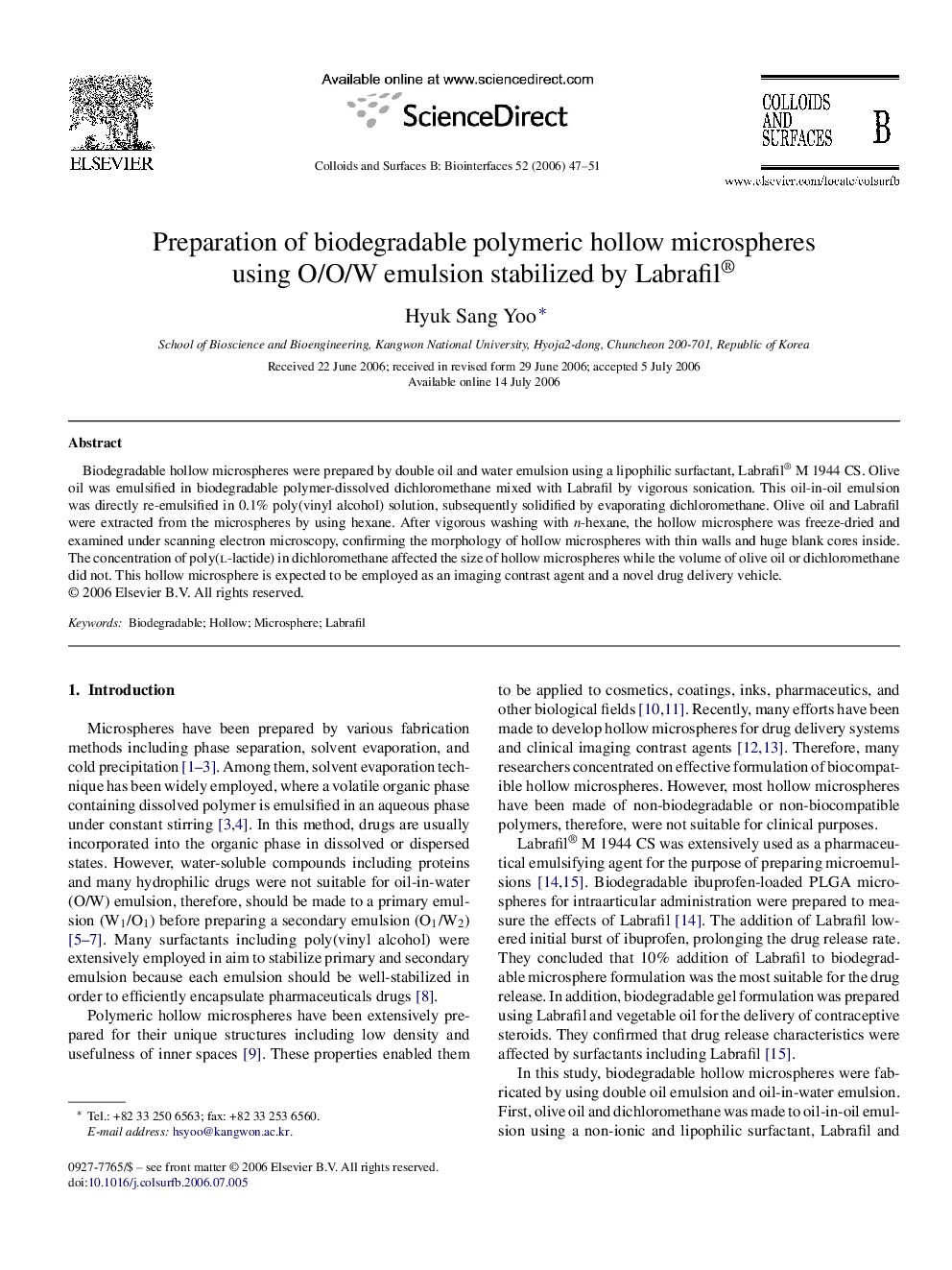| Article ID | Journal | Published Year | Pages | File Type |
|---|---|---|---|---|
| 602563 | Colloids and Surfaces B: Biointerfaces | 2006 | 5 Pages |
Biodegradable hollow microspheres were prepared by double oil and water emulsion using a lipophilic surfactant, Labrafil® M 1944 CS. Olive oil was emulsified in biodegradable polymer-dissolved dichloromethane mixed with Labrafil by vigorous sonication. This oil-in-oil emulsion was directly re-emulsified in 0.1% poly(vinyl alcohol) solution, subsequently solidified by evaporating dichloromethane. Olive oil and Labrafil were extracted from the microspheres by using hexane. After vigorous washing with n-hexane, the hollow microsphere was freeze-dried and examined under scanning electron microscopy, confirming the morphology of hollow microspheres with thin walls and huge blank cores inside. The concentration of poly(l-lactide) in dichloromethane affected the size of hollow microspheres while the volume of olive oil or dichloromethane did not. This hollow microsphere is expected to be employed as an imaging contrast agent and a novel drug delivery vehicle.
